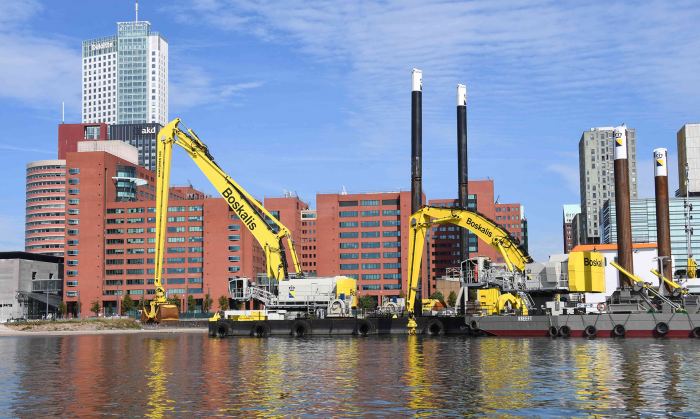After more than nineteen months of preparation, Boskalis’ newest crane vessel Bokalift 2 started installing monopiles for the Southfork offshore windfarm along the east coast of the United States in June. With more than ten brand new installation tools on deck and the assistance of our heavy transport vessels Target, Triumph and Trustee as well as our anchor handling tugs Bear, Nicobar and Sovereign the transportation and installation of the first ‘American’ XXL monopiles is a big success and an outstanding team performance.
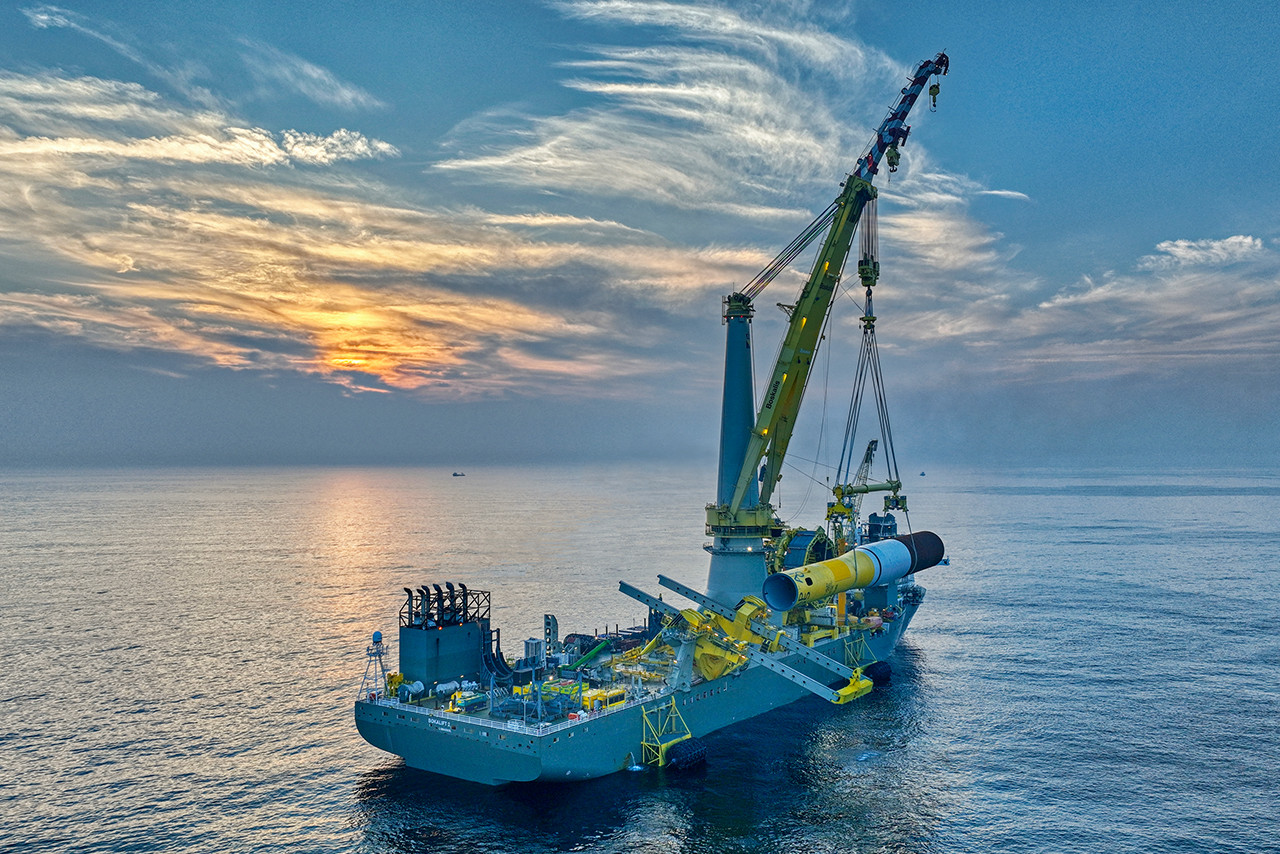

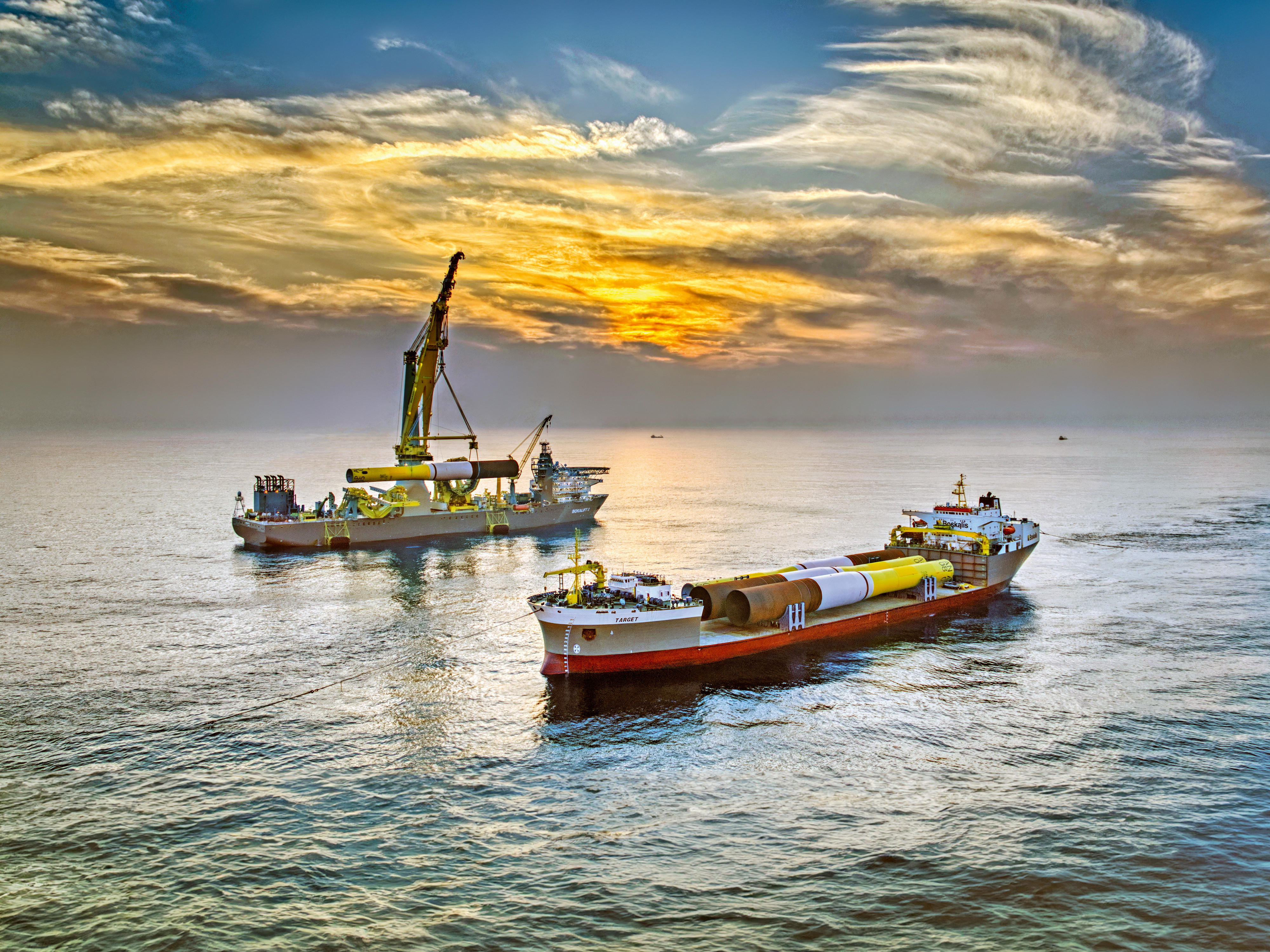
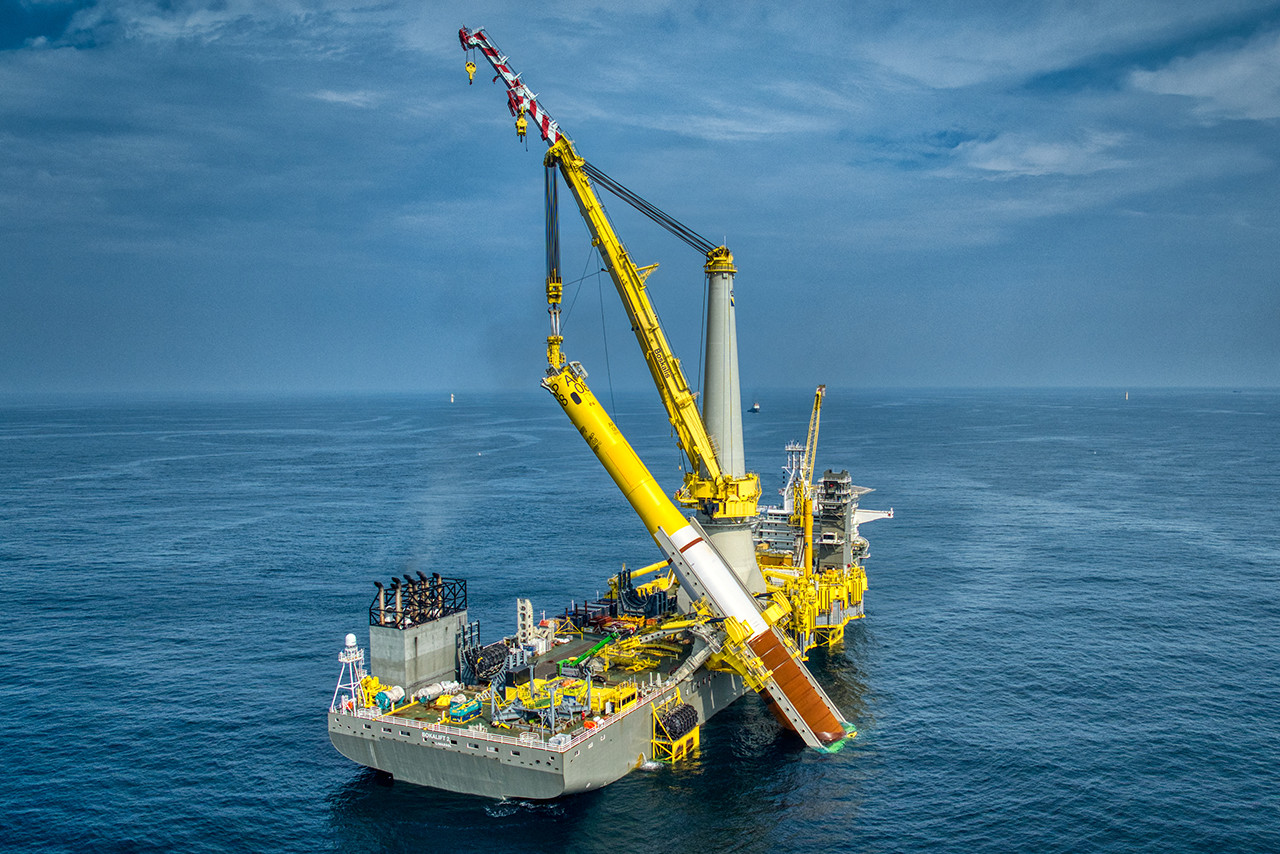
The two most striking new tools on the Bokalift 2 are the Upending Hinge and the Motion Compensated Pile Gripper Frame. Simply put, the Upending Hinge moves the monopile from a horizontal position to a vertical position using the Bokalift 2’s deck crane. Then the crane moves the monopile towards the gripper, which receives it with open ‘gripper arms’. “The gripper can follow the movement of the monopile without the monopile colliding with the gripper and possibly being damaged as a result. Once the monopile is positioned between the arms of the gripper, the arms close around it and then eight rollers located around the inside of the gripper grab hold,” says project manager William Romeijn of Boskalis’ Central Fleet Support department.
The gripper guides the monopile as it is lowered to the seabed. Romeijn: “Movements of the monopile due to external loads from waves, wind and currents are absorbed by the gripper during the lowering operation. Before the monopile is placed on the seabed, the movements are compensated as much as possible, allowing us to position the monopile on the seabed within the set tolerances. Once contact is made with the seabed, the gripper holds the monopile vertically to within 0.25 degrees.”
Boskalis specialists
Before setting sail to the United States, the project team tested those new tools thoroughly in Rotterdam during a trial installation operation. An unprecedented steep learning curve and an on-the-job training by the installation of the first thirteen XXL monopiles and one offshore substation have paid off. Because after a successful Southfork campaign, the crew of the Bokalift 2 became increasingly more familiar with the vessel’s new installation capabilities. “Multiple colleagues from various departments were involved during this first project whereby monopiles were transferred at sea from heavy transport vessels to the Bokalift 2 and then installed using the motion compensated pile gripper frame,” says chief officer Jonathan Tondeur of the Bokalift 2. “All together we had the technical knowledge about our new tools and the interface between them. And on the bridge, we know how we want to work with them in practice. By doing the installation work together, we have already been able to make a number of improvements, allowing us to work more efficiently, faster and safer.”
And so the transport and installation of the first thirteen XXL monopiles was truly a team performance. In addition to the Bokalift 2 and the heavy transport vessels, a number of other Boskalis vessels were involved in the operation. Our ocean going tugs Sovereign and Nicobar kept the heavy transport vessel with the monopiles in the right position, as close as possible to the Bokalift 2, and during installation, the ocean going tug Bear was nearby with a double bubble curtain to minimize the impact of the piling operations for marine mammals and other marine life.
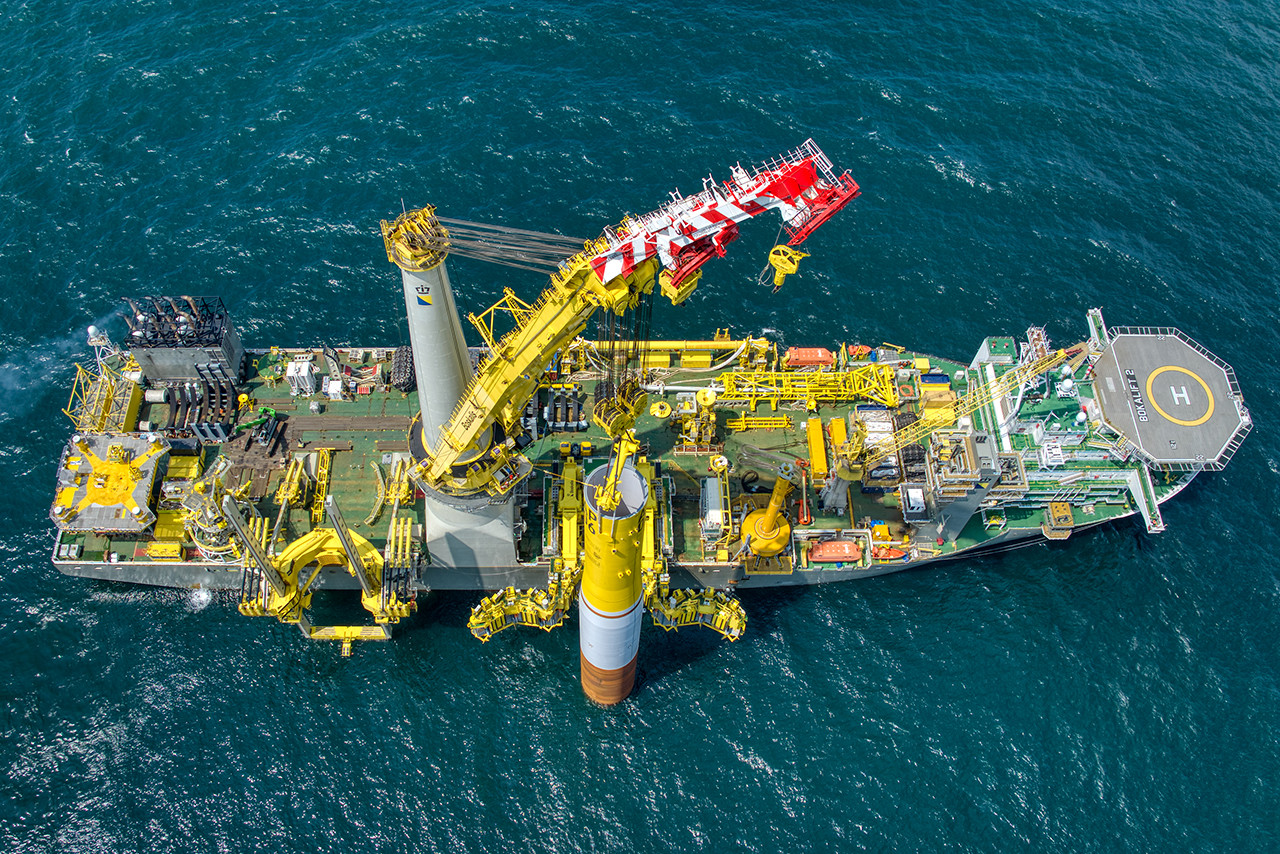
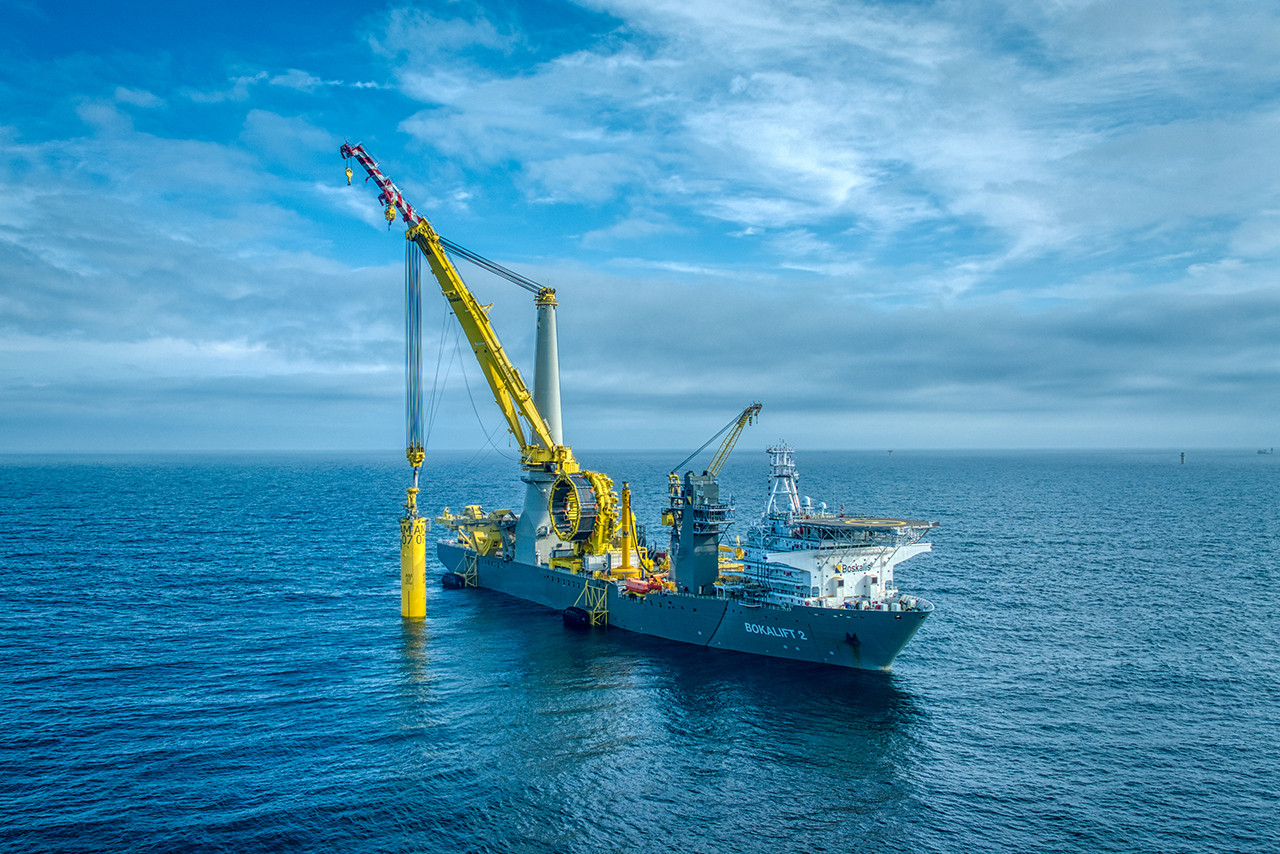
With the success of the Southfork campaign in mind, our Bokalift 2 is more than ready to install offshore wind farms in the years ahead. Behind the scenes, Boskalis’ Offshore Heavy Lift department is already working on new tools for future installation campaigns since the monopiles are getting larger all the time. “Obviously, we are responding to that trend,” says Maarten Nijman, who supervised the installation of the new tools on the Bokalift 2. “So it’s a good thing that everyone has already gained a lot of experience with the Bokalift 2 in the run-up to these projects: this execution confirmed what we saw during the preparations in the simulator. That gives us a huge boost for this project and all the projects to come.”
